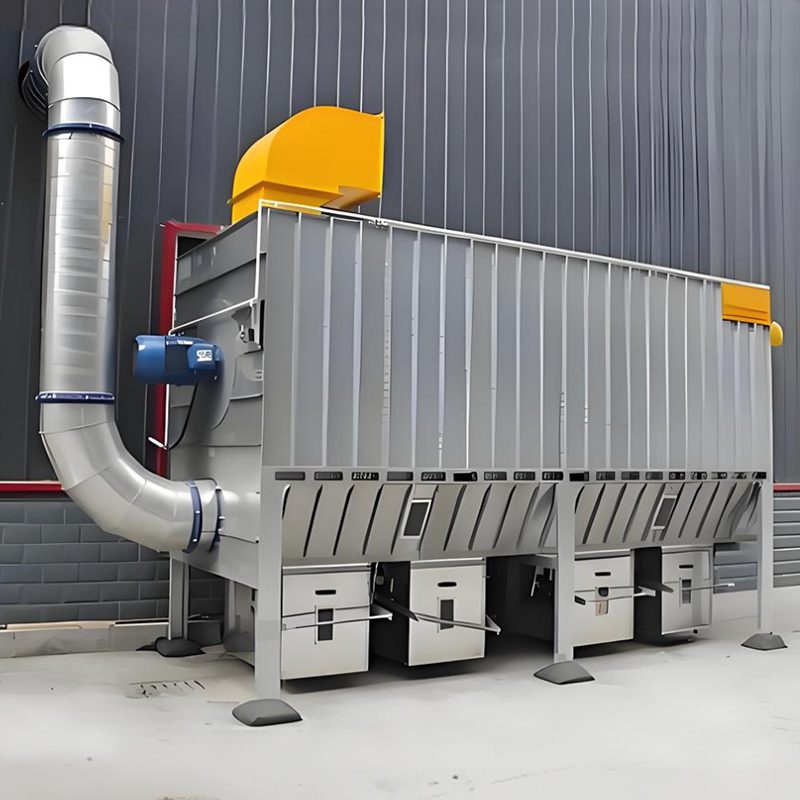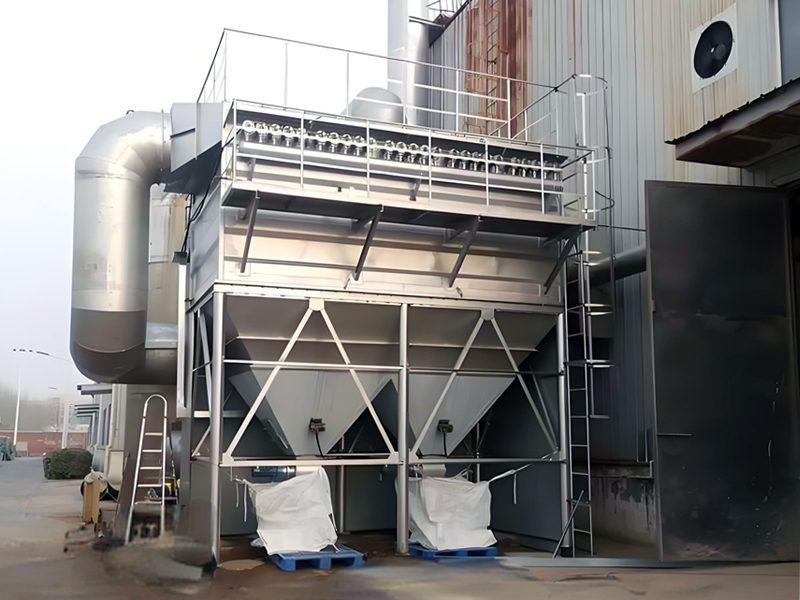Darko offers a variety of stainless steel dust collector, including Stainless steel Cartridge Collectors and Stainless steel Fabric Filters. Additionally, we also provide ducted or standalone downdraft collectors. Furthermore, portable dust collectors are available, as well as mist collection systems and wet dust collectors. All of these products manufacturers construct from 316 or 304 stainless steel. These devices are corrosion-resistant and washable. Moreover, these devices comply with FDA, USDA, and NSF regulatory guidelines. Consequently, they are effective for extracting dust in food processing, pharmaceuticals, and in environments that handle acidic or corrosive chemicals.

Working Principle
The working principle of a stainless steel dust collector involves several key steps to efficiently capture and filter dust and particulate matter from the air in industrial settings. Here’s an overview of the process:
- Air Intake:
- Contaminated air is drawn into the dust collector through an inlet duct or hopper. The airflow is typically facilitated by a fan or blower.
- Dust Separation:
- As the air enters the dust collector, it passes through a series of filters (such as bag filters, cartridge filters, or HEPA filters) made of high-efficiency materials.
- The filters capture dust particles and other contaminants while allowing clean air to pass through. This process can achieve high filtration efficiencies, often exceeding 99%.
- Clean Air Exhaust:
- After filtration, the clean air exits the dust collector through an exhaust duct. The purified air can then be safely released back into the environment or recirculated within the facility.
- Dust Collection:
- Dust accumulates on the surface of the filters during operation. Over time, this buildup can restrict airflow, so a dust removal mechanism is essential.
- Cleaning Mechanism:
- Many stainless steel dust collectors employ a pulse jet cleaning system. This system uses compressed air to periodically blast dust off the filter surfaces, allowing it to drop into a collection bin or hopper below.
- Other cleaning methods may include shaker mechanisms or manual cleaning, depending on the design.
- Dust Disposal:
- The collected dust is typically stored in bins, hoppers, or bags at the bottom of the dust collector. This allows for easy disposal or recycling of the material.
- Monitoring and Control:
- Advanced dust collectors may include monitoring systems to measure pressure differentials across the filters, indicating when maintenance or cleaning is needed.
- Control panels can automate the cleaning cycles and manage the overall operation of the dust collector.
Advantages of Stainless Steel Dust Collectors
- Corrosion Resistance: Stainless steel is highly resistant to rust and corrosion, making it ideal for environments with moisture or chemical exposure.
- Durability: Stainless steel dust collectors are robust and can withstand harsh operating conditions, leading to a longer lifespan.
- Ease of Cleaning: The smooth surface of stainless steel prevents dust and debris from adhering, making maintenance and cleaning easier.
- Hygienic: Stainless steel is non-porous and easy to sterilize, making it suitable for applications in food processing and pharmaceuticals.
- High Strength-to-Weight Ratio: Stainless steel provides strength while remaining relatively lightweight, facilitating easier installation and handling.
- Temperature Resistance: It can withstand high temperatures without compromising structural integrity, suitable for industrial applications involving hot materials.
- Aesthetic Appeal: Stainless steel has a modern, clean appearance, which can enhance the overall look of a facility.
- Recyclability: Stainless steel is recyclable, making it an environmentally friendly choice for dust collection systems.
- Low Maintenance Costs: Due to its durability and resistance to wear, stainless steel dust collectors often incur lower maintenance and replacement costs.
Darko Stainless Steel Dust Collector Applicable Fields
Darko currently operates multiple stainless steel dust collectors . We have mastered balancing technology. This ensures that these dust collection systems deliver the highest quality at reasonable prices.
Stainless steel has excellent corrosion resistance, formability, compatibility, and toughness in a wide temperature range. It is especially suitable for different industrial sectors such as metallurgy, chemistry, ceramics, cement, medicine, and food in the grain and oil industry, heavy industry, light industry, daily necessities industry, and architectural decoration.
Darko manufactures some of the best stainless steel dust collectors in China, serving a global market with advanced technology and the latest equipment.





